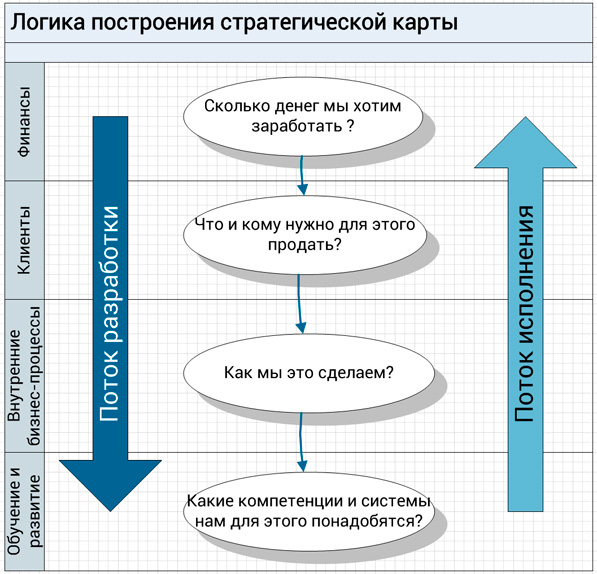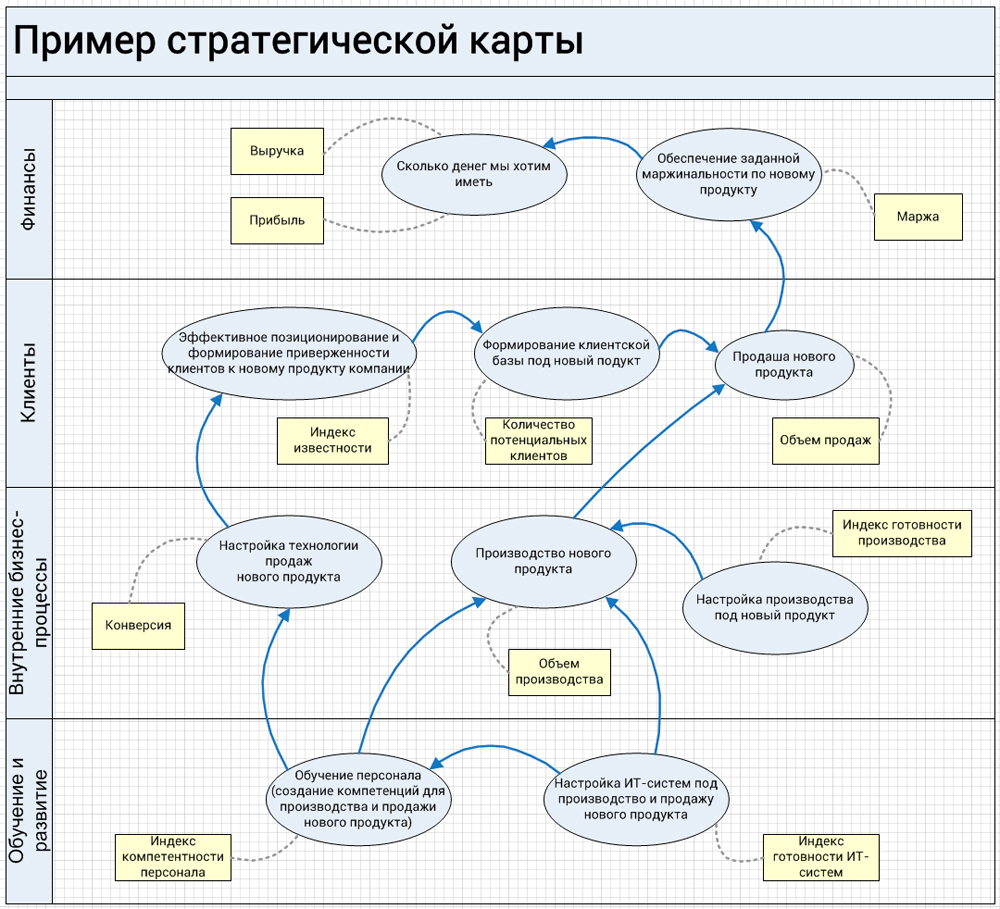The expediency of using a strategic map
Few of the leaders are left indifferent by such a document as the "Strategic Map". Someone pin hopes on it for the guaranteed implementation of strategic plans, someone experiences negative emotions because of the simplified and little effective influence on the achievement of the set goals. Various electronic guides tell us that this is a universal tool that allows us to guarantee the implementation of a strategy, no matter how complex and ambitious it may be. Let's see what we can really count on.
Purpose and essence of the instrument
In 1990, at the Nolan Norton Institute, David Norton and Robert Kaplan conducted a study on "Performance of the organization of the future", which was attended by representatives of large and successful companies. Their joint work was aimed at finding the reasons for the poor implementation of good strategies, and the result was the concept known today as Balanced Scorecard (BSC) Kaplan Robert S. Norton David P. Balanced Scorecard: From Strategy to Action. CJSC "Olymp-Business". Moscow. 2003 .-- 210 p..
The main idea of the concept is that basically enterprises are limited to planning financial indicators, without going deep into how these indicators can be achieved: where will income growth come from, a new quality or new markets. Developing a strategic map using the BSC method allows you to go deeper into the subsystems that are controlled and create opportunities to achieve market and financial goals.
The secret of the BSC method lies in the construction of a specific model - a map with consistent thinking through the critical conditions for the implementation of goals, which are established by the strategy adopted in the company. Of course, if the company does not have a clearly formulated strategy, even if such a map is built, then formally and no miracles should be expected from it. Suppose the company's management has identified a set of strategic objectives. For their successful implementation, the best course of action would be to assign responsibility for achieving each goal. Such consolidation is carried out both at the level of departments and for individual employees through a number of established indicators.
If it turns out to be profitable for people to fulfill the assigned tasks, then they will become an indomitable driving force in the implementation of the strategy. The difficulty lies in the fact that everyone, from the deputy director to the mechanic, sees their role in the implementation of new goals. And here the logic suggested by D. Norton and R. Kaplan comes to our aid - to build a cause-and-effect chain of goals in 4 zones, called perspectives in the methodology.
- Finance.
- Customers (or Market).
- Internal business processes.
- Training and Development (or Personnel and Systems).
The diagram below reflects a sequence of questions that allows you to systematically build from top to bottom and reach the necessary resources and technologies, the use of which will ensure the fulfillment of market and financial goals. With this approach, there is an understanding of how the internal mechanisms and competencies of the company develop. Implementation of the strategy, written in the format of a strategic map, must start from the bottom up - first, opportunities at the personnel level are created, business processes are adjusted, and then market success and additional income follow.

The logic of building a strategic map
Logic and example of building a strategic map
For greater clarity and controllability, the map should contain, in addition to goals, the criteria for achieving them - indicators. At the same time, one goal may have several indicators that characterize it from different sides. But the two goals should not have the same indicator, since we will not be able to distinguish between their achievement in the accounting system.
It is important that the indicators can be not only "hard", reflecting specific values of production volumes, but also "soft" - characterizing the qualitative state of the processes. For example, satisfaction, directly quality, competence, etc. Soft indicators are difficult to measure, and in absolute terms they are also multifactorial, subjective. At the same time, it is they who create the internal driving force of the business. In this case, they resort to indices, ratings and relative values. For example, a customer satisfaction index can be measured by the proportion of customers who received a service and rated it positively on a given scale.
The methodology does not establish strict requirements for the design of the map; the key requirement is the presence of the above blocks (perspectives), which must be arranged in the presented order. Objectives are usually drawn in the form of an oval, indicators are placed in rectangles. The arrows connect the goals to each other, reflecting the logic of their relationship, and the dashed line - with indicators to indicate which criteria are set to control the achievement of goals. Indicators are not connected with each other. A conventional example of implementing a strategy to enter the market with a new product is shown in the figure below.

(click to enlarge)
Another of the weighty requirements of the approach is the need to balance both goals and indicators. But the authors did not provide any precise explanations of what and how to balance. Therefore, the requirement of balance is fulfilled conditionally: in each perspective there should be approximately the same number of goals and indicators (with the exception of the financial one - there may be fewer of them). Indicators should be both hard and soft and, if possible, they should take into account different aspects of the enterprise.
This approach to documenting a strategy is considered one of the most popular today, because:
- is simple;
- does not require specialized systems for development;
- the diagram is visual and understandable to the staff;
- serves as a way to integrate the tasks of implementing the strategy into the existing system of motivation;
- works well for project managers.
 Discounted payback period
Discounted payback period Methodological aspects of project management
Methodological aspects of project management Scrum development methodology
Scrum development methodology